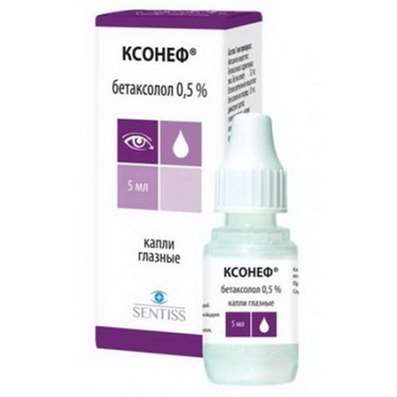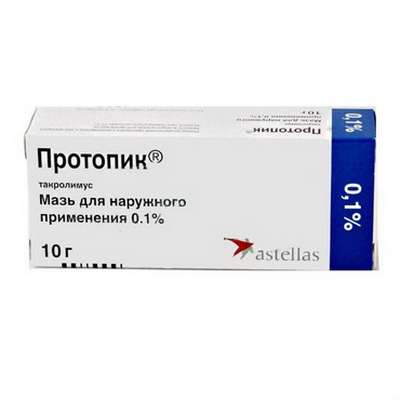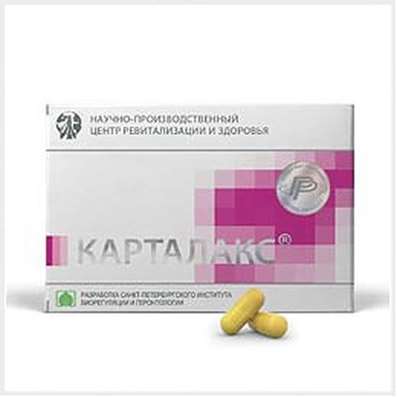Treatment of sleeplessness
12 Dec 2016
Sleeplessness is one of the most frequent claims on acceptance at the general practitioner. Success of treatment of sleeplessness depends on the correct diagnosis. There is a set of somnolent medicines. Ideal sleeplessness medicine shall cause a dream with the normal, but not artificially changed structure, not to render an after-effect in the form of ricochet uneasiness or residual drowsiness, not to interact with other medicines, not to cause dependence and a syndrome of cancellation in case of long acceptance. Regular moderate physical activity has these properties, but often it it appears insufficiently; besides, it is impossible in case of heart troubles and lungs. However, quite often even small loading helps to cause a dream. Though value of a dream is up to the end not known, it promotes normal day activity, and it is necessary to apply hypnotic drugs so that not to break it.
Two main matters of argument in treatment of sleeplessness is indications to drug treatment and the choice of medicine of short or long action. In the 1990th to appoint benzodiazepines became rarer. The English doctors resort to them with care, both in case of uneasiness, and in case of sleeplessness (Livingston, 1994). However, this tendency can reflect rather messages of mass media on their side effects, than scientific data, and as a result some patients needing hypnotic drugs don't receive them (Walsh and Engelhardt, 1992). The work which showed that doctors consider necessary to appoint benzodiazepines much more less than do it in practice (Yeo et al is in this respect interesting., 1994). Side effects of hypnotic drugs should be correlated to consequences of chronic sleeplessness, including quadruple increase in number of accidents (Balter, 1992).
Traditionally not enough attention is paid to search of the reasons of sleeplessness and its non-drug treatment. Meanwhile along with assignment of hypnotic drugs it is necessary to pay attention to the removable reasons of the sleeplessness ought to hygiene of a dream to remove fear of sleeplessness in case of an otkhozhdeniye for sleeping, to teach the patient to set up so internal clocks that in due time there was a drowsiness, and to dissuade him from alcohol intake and OTC sleeping medicines (Nino-Murcia, 1992).
Classification
Select 3 types of sleeplessness (National Institute of Mental Health Consensus Development Conference, 1984).
Passing sleeplessness lasts to 3 days and is usually connected to a short-time stressful situation. There is enough respect for hygiene of a dream; if hypnotic drugs, then in the minimum dose and are assigned only to 2 — 3 nights. However assignment of benzodiazepines before important events (for example, examinations) can reduce working capacity (James and Savage, 1984).
Short-time sleeplessness lasts of 3 days to 3 weeks and is caused by such stresses as a disease, family or official troubles. Treatment also should be begun with hygiene of a dream. It is possible to assign sleeping pill to 7 — 10 days (better discontinuous course, with passes for 1 night after 1 — 2 nights with a good dream).
Chronic sleeplessness lasts more than 3 weeks and can be not connected to a stress. More profound survey is shown to such patients, but the somnografia usually isn't required.
Sleeplessness in case of mental disorders often passes against the background of treatment of the main disease. So, in case of depressive attacks with sleeplessness even inhibitors of the reverse capture of serotonin usually improve a dream in spite of the fact that sleeplessness belongs to their ghost effects. If these medicines reduced a depression, but caused persistent sleeplessness (as side effect), adding of small doses of trazodon for the night is capable to improve a dream, and also to strengthen the main effect (Nierenberg et al., 1994). However at such patients the priapizm, orthostatic hypotonia and arrhythmias are possible.
Successful treatment of disturbing frustration often eliminates the accompanying sleeplessness. Such patient appoint more and more seldom tranquilizers as data on efficiency of other medicines, for example beta accumulate in case of uneasiness before public statements and inhibitors of the return capture of serotonin in case of neurosis of persuasive conditions and, perhaps, alarm neurosis. The expressed sleeplessness in case of sharp psychoses (schizophrenia and a mania) is usually eliminated by neuroleptics. In these cases often add benzodiazepines to reduce excitement; besides, they improve a dream.
Sleeplessness in case of other chronic diseases (heart failure, bronchial asthma, HOZL) also often decreases against the background of treatment of the main disease.
Adequate anesthesia in case of chronic pain, including at oncological patients, eliminates both pain, and sleeplessness, doing purpose of hypnotic drugs excessive. You can also like Cerebramin.
Many patients just don't observe hygiene of a dream, and they are often helped by restriction of acceptance of coffee, refusal of alcohol, physical activity and regular alternation of a dream and wakefulness. Reflex sleeplessness should be suspected in the absence of mental and other diseases and in case of inefficiency of actions for hygiene of a dream. At such patients the bedroom is associated with day activity, but not with a dream; to them recommend to use a bedroom only for sexual connections and a dream, spending the rest of the time (including leisure — even to read and watch TV) out of a bedroom.
Wrong perception of a dream
Some patients complain of a bad dream, but the somnografia doesn't reveal at them symptoms of sleeplessness; to treat them it is difficult.
To some people of rather short dream instead of ordinary 7 — 8 h. If they aren't disturbed drowsiness, the bad mood and decrease in working capacity, treatment isn't required.
Sometimes patients with apnoe in a dream which don't feel like holidaymakers in the mornings address for hypnotic drugs. However hypnotic drugs are usually contraindicated to them, the somnografia is necessary for specification of the diagnosis and development of medical tactics. Chronic sleeplessness. Non-drug treatment, including training in hygiene of a dream, physical activity (whenever possible), methods of a relaxation and behavioral psychotherapy is restriction of a dream and is important for all such patients. Restriction of a dream includes maintaining the diary where the patient notes time spent in a bed then reduces it by 30 — 60 min. It creates small deficiency of a dream and facilitates falling asleep. In case of the patient recommend to go to bed only at feeling of drowsiness and to use a bedroom only for the sexual intercourses and a dream; if the dream hasn't come in 15 — 20 min., to rise and leave a bedroom, coming back only at emergence of drowsiness; to rise at the same time irrespective of whether it was succeeded to get enough sleep, and not to sleep in the afternoon. These measures best of all help to accelerate falling asleep and to reduce number of awakenings (Morin et al., 1994).
Use of hypnotic drugs is limited by their side effects. Drug treatment of chronic sleeplessness is complicated for a number of reasons. Long acceptance of hypnotic drugs reduces their efficiency and causes ricochet effect in case of cancellation. Almost all medicines change structure of a dream. Barbiturates shorten a REM sleep, benzodiazepines — a deep slow sleep and, to a lesser extent, a REM sleep. Value of these shifts isn't clear yet, but there is an impression that the deep slow sleep is especially important for recovery of an organism. The REM sleep can promote fixing of information. Shortening of a deep slow sleep under the influence of benzodiazepines easing of their effect in case of long acceptance, and also elimination of the nightmares arising when awakening during this period of a dream can speak.
Benzodiazepines cause cognitive violations. Medicines of long action cause next day (that increases risk of falls), medicines of short action — ricochet uneasiness. At the same time the feeling of a quiet dream is caused by their effect. There are data that to triazoles causes cognitive changes, smoothing subjective distinctions between a dream and wakefulness (Mendelson, 1993). Apparently, it leads to anterograd amnesia more often. The day dream improves the working capacity broken by alcohol or difengidraminy, but not triazolamy (Roehrs et al., 1993).
Benzodiazepines aggravate àïíîý in out of. In general opinion, in case of àïíîý in a dream, especially obstructive, hypnotic drugs are contraindicated as they reduce a tone of muscles of the upper airways, at the same time suppressing ventilatory reaction to a hypoxia (Robinson and Zwillich, 1989).
It is important to remember that in case of a gipersomnia even the long dream sometimes doesn't bring refreshing, and such patients sometimes resort to hypnotic drugs.
Sleeplessness at elderly
Elderly, as well as children, unlike people of young and middle age, except night sleep one more or several times in the afternoon. It is more difficult to define necessary time of a dream at the same time. At the people who are regularly sleeping in the afternoon time of a night dream is shortened irrespective of age, but they don't feel day drowsiness. Such mode reminds a siesta (midday rest at the southern people) and, apparently, is important for adaptation.
At elderly due to reduction of content of water, increase in content of fat and decrease in function of kidneys T1/2 of benzodiazepines increases. Doses, during 1 - é the weeks giving a good dream without after-effect by 3rd week can cause amnesia and day drowsiness due to accumulation of medicines, especially with high T1/2. For example, his metabolites are removed by kidneys; due to accumulation of fat and decrease in SKF of his T |/2 at persons of 80 years can be 4 times more, than persons have 20 years.
The elderly people conducting full-fledged life and almost not feeling day drowsiness, can complain of sleeplessness as sleep less, than in youth. Unjustified purpose of hypnotic drugs in such cases is fraught with cognitive violations and decline in quality of life.
Cancellation of benzodiazepines at the elderly patient, long time receiving them concerning uneasiness or sleeplessness is long and difficult process. It is sometimes better to continue medicine reception, watching closely his after-effect.
Cancellation of hypnotic drugs
Big difficulties are represented by maintaining the patients receiving somnolent many months and years (Fleming, 1993). After regular acceptance of benzodiazepines for more than 2 weeks they can be cancelled only gradually. Sometimes in case of treatment it is more convenient to pass with medicines of short action to medicine of long action in the beginning, and then to reduce its dose. In one research of 9 patients received benzodiazepines, further replaced them on zopiklon and after 1 month of treatment directly cancelled it; against the background of zopiklon improvement of a dream was noted, and its cancellation wasn't followed by an abstinence syndrome (Shapiro et al., 1993).
When using medicines of long action the syndrome of cancellation happens delayed, and the patient should be warned about his manifestations.
Recommendations to destination hypnotic drugs. Stimulators the benzodiazepinovykh of receptors — benzodiazepines and their new analogs zolpidy, zopiklon and zaleplon have clear advantages before barbiturates: at them the therapeutic range is wider, the risk of abuse is lower, they are less dangerous in case of overdose and influence structure of a dream less. Medicines of short action are preferable at the working people in case of the broken falling asleep for lack of the expressed uneasiness during the day. Such medicines approach also elderly as on their background the risk of falls and oppression of breath is small. However the doctor and the patient shall understand that these medicines, especially in high doses, can cause early awakening and strengthening of uneasiness during the day, also amnesia episodes are possible.
Benzodiazepines of long action it is more preferable in case of the expressed uneasiness when the after-effect in the form of drowsiness is admissible, but uneasiness strengthening during the day would worsen a condition. These medicines suit also patients with a depression as benzodiazepines of short action can increase tendency to extreme awakening. In too time medicines of long action are capable to cause cognitive frustration — in the form of an after-effect or delayed (for the accumulation account of medicine after 2 — 4 weeks of treatment).
Barbiturates, glutetimid, meprobamat and other medicines it isn't necessary to appoint in case of sleeplessness. They often cause dependence and are very dangerous in case of overdose.
Sleeping medicines
The dream represents a condition of rest with repeatedly repeating phases of activity of a brain which can be registered on the electroencephalogram (EEG). Stages of a dream repeat cycles on 4-5 times in a night, and cycles are interrupted by a REM sleep phase (FBS or REM, from English Rapid Eye Movement) (And). EEG FBS is similar to wakefulness EEG. FBS is characterized by fast movements of eyeballs, existence of dreams and twitching of some muscles while other muscles atonich-on. Normal FBS precedes a phase of a slow dream (FMS or NREM, from English No Rapid Eye Movement). At frequent interruption of a dream FBS time (normal it makes about 25% of all time of a dream) is shortened that leads to a condition of concern and irritability in the afternoon. Deficiency of FBS is eliminated in the next nights due to lengthening of this phase (B).
Hypnotic drugs can reduce FBS (B). At sleeping pill reception several days in a row ratio of stages of a dream is normalized. Right after cancellation of medicine FBS it is extended and restored in many days (B). FBS is followed by dreams, and at the person an impression about a defective dream is made. Therefore people continue to accept hypnotic drugs that results in dependence.
As sleeping medicines benzodiazepines are applied. Earlier applied barbiturates have gone out of use (the overdose caused breath paralysis). As well as barbiturates, benzodiazepines work on GAMKD-retseptor, however points of application of activity of benzodiazepines and barbiturates are various. In high doses barbiturates distinctly work also as GAMK-agonists.
Depending on concentration in a blood benzodiazepines and burbiturata have abirritating and sedative effect, at reception in higher doses cause a sleepiness and promote a backfilling (In). In low concentration benzodiazepines reduce sensation of fear.
Unlike barbiturates, benzodiazepine derivatives at oral administration have no narcotic effect, don't lower the general activity of a nervous system (there are no data on cases of respiratory standstill or suicidal bents), and also don't influence the ABP, the heart rate and body temperature. Therapeutic range of benzodiazepines is much wider, than at barbiturates.
Hypnagogues zolpidy (imidazopyridine), zaleplon (pyrazolopyrimidine) and zopiklon (tsiclopirrolon) on the chemical structure aren't similar to benzodiazepines, but despite it benzodiazepines join to GAMKD-retseptoram in the same sites, as. Nevertheless their action isn't completely identical to effect of benzodiazepines. Zolpidem influences dream phases more weakly, than benzodiazepines, danger of development of dependence it is less also sedation, apparently, less noticeable. Differences can be in operation bound to heterogeneity of the GAMK-receptors consisting of five subjedinitsa who in turn belong to different types.
Antihistamine drugs belong to the hypnotic drugs which are released without prescription. In this case their sedation is used as the main. Besides, they have weak hypnotic effect. It is necessary to consider side effects, for example atropine like and also contraindications to use of these drugs.
Enzodiazepines
Mechanisms of activation and blocking of neurones are necessary for functioning of a CNS. Processes of inhibition of neurones of a head and spinal cord are bound mainly to effect of substance carrier — at - aminobutyric acid (GAMK) which through GAMK-receptors causes decrease of excitability of nervous cells. The mechanism is started when binding GAMK thanks to what open C1 ~ - channels that leads to a hyperpolarization of a cellular membrane and, therefore, depression of excitability of a neurone. The receptor constructed of five subjedinitsa shows high specificity to benzodiazepines which binding happens, close to that where GAMK is bound. As a result of allosteric effect of benzodiazepines binding and action of GAMK amplifies. From benzodiazepines Diazepamum is most often prescribed. Barbiturates are also capable to be bound on proteins of Ch-channels therefore the channels which opened under the influence of GAMK longer time are in such state.
Benzodiazepines have a wide range of activity: they have the restful, lulling, anticonvulsant effect, reduce a pavor, lower a tonus of sceletal muscles and can be used at a narcosis. It is especially important that at use of therapeutic doses of benzodiazepines the vegetative centers (the respiratory center and the center of a regulation of blood pressure) aren't affected. Therefore benzodiazepines have wide therapeutic range, they can't almost be used at suicidal bents (contrary to barbiturates). In low doses benzodiazepines reduce exaltation and work anxiolytic, without causing any complications! Benzodiazepines find broad application as hypnagogues. For this purpose it is more preferable to use bonds which during the night (so far the person sleeps) can be brought completely out of an organism (tetracyclic drugs, such as to triazoles, brotiozolam, to alprazola). Drugs with longer period of removal for which constant concentration in an organism is guaranteed are necessary for long sedative therapy (for example, Diazepamum).
At reception of benzodiazepines psycho-vegetative communications (mental derangements) caused by various diseases can be eliminated. At serious illnesses during the acute period, for example at a myocardial infarction or serious strokes, to therapy benzodiazepines assign a larger part. Indications for parenteral administration is the epileptic status; at some forms of an epilepsy benzodiazepines can be applied long time, including in a combination with other drugs. The benzodiazepines which are quickly brought out of an organism are used for an injection narcosis.
At reception of benzodiazepines appreciable personal changes appear. There is delection of reactions, perhaps inadequate perception of the events. All activity demanding fast and purposeful actions (and not just driving of the car), has to be suspended.
Antagonists of benzodiazepines
Flumazenil has high affinity to benzodiazepine receptors, but has no activity; it is bound to a receptor and forces out diazepine. Flumazenil is a specific antidote and is applied at poisonings with benzodiazepines or to the termination of their action. At the patients suffering from benzodiazepine dependence flumazenit eliminates cancellation symptoms.
Flumazenil is brought quickly an elimination half-life about 1 h. Therefore at poisonings with benzodiazepines of the prolonged action it is necessary to enter repeatedly doses of 0.2-1.0 mg of a flumazenil intravenously.
Pharmacocinetic behavior of benzodiazepines
The typical way of disintegration of benzodiazepines (A) is presented on the example of diazepam. At first the metilny group at nitrogen in situation 1 is chipped off; then (or at the same time) there is a hydroxylation on carbon in situation 3; as a result oxazepam is mainly formed. This metabolite is biologically active and is inactivated only after accession on IT - group in the provision 3 of acid; air as hydrophilic connection is easily removed by kidneys. Metabolites disintegration of dezmetildiazepam (nordiazepam) much longer. In this process there are some more benzodiazepines which can be considered as the first metabolites at decomposition of a dezmetildiazepam, for example, to prazepa and chlordiazepoxide (the first of benzodiazepines was called Librium®). Mechanisms of metabolism of benzodiazepines containing in a benzene ring instead of NCVrpynny chlorine and instead of fenilny group at C5 — fluorine atom, for example flunitrazepam metabolism, in general are similar. All these substances work a long time, except for oxazepam which represents derivative benzodiazepine as some other similar connections, it is inactivated for one metabolic stage with a half-life period 8 ± 2 h. Only "completion" to a molecule of nitrogen-containing rings with metilny group (A) which at a metabolism can quickly be hydroxylated, leads to formation of connections with shorter half-life period. Midazolam, brotiozolam and to triazoles belong to such tetracyclic benzodiazepines. Two last medicines are used as hypnotic means, midazolam intravenously at introduction to an anesthesia.
For receiving drugs with a half-life period of average duration it is necessary to subject structure of Diazepamum to further changes: instead of chlorine it is necessary to place NCV group (which in an organism is quickly restored to an amino group with simultaneous acetylation) or Bromum (then in an organism benzene ring has to reveal). The bioinactivation of these bonds occurs in one stage.
Narcotic potential. At regular reception of benzodiazepines dependence in rare instances can develop. It isn't so obvious as for drugs of other groups with a narcotic potential as symptoms are delayed and are shown only at cancellation of medicine after prolonged use. There is a concern, irritability, pavors, nervousness and sometimes, after very high doses, a cramp. These symptoms often don't differ from those which served as indications to use. Introduction of antagonists of benzodiazepine can provoke sudden emergence of these symptoms. Patients most often abuse drugs of average duration of action and therefore dependence meets at administration of drugs of this group more often.
Medicines
- Tranquilizers and sedatives
- Zopiclon (Imovan)
- Donormil
- Melatonin
- GABA
- Xenon (inhalations)
Prospects
The understanding of molecular structure of subtypes of the exciting glutamate receptors and brake GAMK-receptors consisting of various subjedinitsa will allow to expressirovat genes of the corresponding subjedinitsa in cellular cultures and on action on them to select selective ligands with desirable action and the minimum side effects. But progress in treatment of sleeplessness will be based as on search of new medicines with the improved pharmacokinetics and pharm dynamics, and on the thought-over use of non-drug methods, including behavioral psychotherapy, hygiene of a dream and physical activity.

 Cart
Cart





